Abstract
Purpose: The study explores the U-shaped impact of responsible leadership on cyberloafing and the moderating effect of self-efficacy based on conservation of resources theory.
Design/methodology/approach: This is a field study based on quantitative analysis of full-time employees in the enterprises who work on computers for over 1 year. Hierarchical regression was employed to examine hypotheses. Bootstrap and Bayesian analysis to conduct robustness tests.
Findings/results: Results from 305 employees showed that responsible leadership had a U-shaped impact on cyberloafing. The self-efficacy moderated the U-shaped relationship between responsible leadership and cyberloafing. For employees with high self-efficacy, responsible leadership is more likely to reduce cyberloafing, but for employees with low self-efficacy, responsible leadership is more likely to increase cyberloafing.
Practical implications: Organisations should recognise the role of leaders in mitigating employees’ cyberloafing behaviour through effective supervision, and equip the leaders with a comprehensive understanding of their impact. Besides, for employees with low self-efficacy, leaders should pay attention and help them through effective supervision.
Originality/value: Our work illustrated the double-edged sword effect of responsible leadership on employee cyberloafing and identified self-efficacy as a key boundary condition of the conservation of resources theory. This study expands the related research on the influencing factors of cyberloafing behaviour and provides clue for the possible negative effects of responsible leadership. In addition, this study deepens the conservation of resources theory.
Keywords: responsible leadership; cyberloafing; self-efficacy; U-shaped effect; conservation of resources theory; Bayesian analysis.
Introduction
Cyberloafing involves ‘employees voluntarily utilizing company internet access during office hours for personal activities, such as browsing non-job-related websites and checking personal email’ (Lim, 2002; Peng et al., 2023). A poll conducted by the career website http://www.vault.com revealed that over 90% of the 1244 surveyed employees engage in Internet browsing for information unrelated to their work duties during office hours (Lavoie & Pychyl, 2001). This behaviour reduces employees’ productivity and leads to an annual financial loss of $4500 per employee (Lim et al., 2021). However, because of its concealment, cyberloafing is widespread in the workplace (Zhong et al., 2022), which has become a problem for leaders. With a growing number of employees working from home because of the coronavirus disease 2019 (COVID-19) pandemic, it becomes more difficult to effectively monitor employees’ behaviour (Lim & Teo, 2022), making cyberloafing behaviour even more prevalent.
Given this, research (e.g. Andel et al., 2021; Batabyal & Bhal, 2020; Chavan et al., 2021; Elciyar & Simsek, 2021; Hu et al., 2021) has been undertaken to pinpoint the factors that contribute to cyberloafing behaviour. Some scholars have attempted to probe the antecedents of cyberloafing behaviour from the viewpoint of employees (such as mood, cognition, habit formation, personality traits) (Andel et al., 2021; Chavan et al., 2021; Elciyar & Simsek, 2021; Hu et al., 2021; Sheikh et al., 2019); others have conducted research from the perspective of organisational environment (e.g. role stressor, coworkers’ cyberloafing, organisational justice, organisational control) (Batabyal & Bhal, 2020; Elrehail et al., 2021; Lim, 2002; Zhou et al., 2023; Zoghbi Manrique de Lara et al., 2006). Specially, when employees work in the workplace, the most direct situational influence factor that they are exposed to is their direct leaders (Zhang et al., 2022), and leaders are directly responsible for employees’ behaviour; hence, leadership styles have a significant impact on employees’ cyberloafing behaviour (Lim et al., 2021; Zhang et al., 2022). Among them, responsible leadership emphasises conscientiousness which can awaken employees’ sense of responsibility (Antunes & Franco, 2016), so that employees can consciously resist cyberloafing. Therefore, scholars have begun to put the focus on the influence of responsible leadership on cyberloafing behaviour (Zhu et al., 2021).
Existing studies (e.g. Zhu et al., 2021) mainly have focussed on the linear effect of responsible leadership on cyberloafing behaviour; for example, one study has proposed that responsible leadership can reduce employees’ cyberloafing behaviour (Zhu et al., 2021). However, according to the too-much-of-a-good-thing (TMGT) effect, ‘all apparently consistently positive relationships reach context-specific inflection points. Beyond these points, the relationships tend to become asymptotic and often turn negative, contributing to an overall pattern of curvilinearity’ (Pierce & Aguinis, 2013), which also was supported by many empirical studies (Wan et al., 2023; Yun & Beehr, 2023). Based on the above, we argue that there is also a TMGT effect of responsible leadership on cyberloafing behaviour. Responsible leadership can reduce employees’ cyberloafing behaviour before a critical point; but beyond the critical point, responsible leadership increases cyberloafing behaviour. Several studies provide indirect evidence for this idea. For example, Guo and Su (2018) show that responsible leaders have both positive and negative effects on employees’ organisational citizenship behaviour through different mediations.
To further explore the possible U-shaped relationship between responsible leadership and cyberloafing, we employed the conservation of resources (COR) theory, which emphasises that individuals always strive to acquire and preserve valuable resources (Halbesleben et al., 2014). Drawing upon COR theory, on the one hand, ‘responsible leaders prioritise effective engagement with stakeholders, distribute responsibilities equitably, collaboratively address issues, and empower stakeholders by involving them in the decision-making process’ (Voegtlin, 2016). This indicates that responsible leaders possess a pronounced sense of responsibility, an important psychological resource, which can be passed to employees (Lu et al., 2022), leading employees to obtain psychological resources, and consciously reducing cyberloafing behaviour. On the other hand, responsible leaders also encourage employees’ participative decision-making and shared problem-solving about societal and environmental responsibilities (Voegtlin, 2011; Waldman & Balven, 2015), which is perceived as an expansion of employees’ required job duties and makes the employees take on an amount of extra work. This consumes a lot of employees’ resources and activates the resource preservation motivation causing the employees to save resource. Thus, employees will reduce their work engagement and then engage in cyberloafing behaviour in order to prevent further loss of resources and preserve the existing resources.
Furthermore, the COR theory underscores the influence of individual characteristics on the process of resource acquisition and conservation (Halbesleben et al., 2014; Hobfoll, 1989). Following this idea, we propose that self-efficacy, a key individual trait, ‘being concerned with individuals’ confidence in their abilities to achieve specific outcomes’ (Bandura, 2012), moderates the U-shaped effects of responsible leadership on cyberloafing behaviour as self-efficacy affects the intensity of individuals’ motivation to acquire and conserve resources. The theoretical model is presented in Figure 1.
The key contributions of this research are as follows. Firstly, this study expands the related research (Andel et al., 2021; Batabyal & Bhal, 2020; Bhattacharjee & Sarkar, 2023; Chavan et al., 2021; Elciyar & Simsek, 2021; Hu et al., 2021; Peng et al., 2023) on the influencing factors of cyberloafing behaviour. Previous studies on antecedents of cyberloafing behaviour mainly focus on individual characteristics (Lim & Teo, 2005) and organisational circumstances (Lim, 2002; Zoghbi-Manrique-de-Lara, 2006; Zoghbi-Manrique-de-Lara et al., 2006); limited studies concentrate on the impact of leadership on cyberloafing behaviour (Bhattacharjee & Sarkar, 2023; Lim et al., 2021; Peng et al., 2023; Zhang et al., 2022; Zoghbi Manrique de Lara & Viera-Armas, 2017). These studies found that authoritarian leadership and abusive supervision positively affect employees’ cyberloafing, and ethical leadership and participative leadership negatively affect employees’ cyberloafing. These studies mainly tested the linear effect of leadership on cyberloafing (Bhattacharjee & Sarkar, 2023; Lim et al., 2021; Peng et al., 2023; Zhang et al., 2022; Zoghbi Manrique de Lara & Viera-Armas, 2017), but the U-shaped relationship between them has not been paid attention. Noticing this fact, our study complements this research by examining the U-shaped influence of responsible leadership on cyberloafing behaviour, thus further enriching the research on antecedents of cyberloafing behaviour.
Secondly, this study enriches the literature on responsible leadership. Most of the existing studies on responsible leadership have found that responsible leadership has a positive impact on employee behaviour (Wang et al., 2015; Wen & He, 2017); however, there is a lack of research on its negative effects. Although some scholars are aware of the possible negative effects of responsible leadership (Wen & He, 2017; Zhu et al., 2021), limited research has been conducted to empirically examine it. In this study, based on COR theory, we explore the U-shaped relationship between responsible leadership and cyberloafing, viewed through the lens of resource theory, thus providing clue for the possible negative effects of positive leadership styles. Finally, this study deepens COR theory. We identify an important boundary condition of COR theory by examining the impact of self-efficacy on the process of resource preservation and acquisition.
Theory and hypotheses
Responsible leadership and cyberloafing behaviour
The COR theory holds that individuals always strive to acquire new resources and protect existing ones (Bickerton & Miner, 2023; Halbesleben et al., 2014; Hobfoll, 1989; Hobfoll et al., 2018), which consists of two competing tenets – ‘resource conservation’ and ‘resource acquisition’. The ‘resource conservation’ tenet states that individuals take actions to preserve existing resources to prevent further losses when they face the loss of resources (Halbesleben et al., 2014; Hobfoll, 1989). Conversely, the rarely mentioned ‘resource-acquisition’ tenet of COR theory posits that ‘individuals are driven to obtain resources to accomplish their objectives’ (Halbesleben et al., 2014; Hobfoll, 1989; Zhu et al., 2021). Employees need to resist the temptation of cyberloafing using resources because cyberloafing is an act of instant pleasure (Wagner et al., 2012; Zhu et al., 2021), and engaging in cyberloafing may be a strategy to conserve the available resources when employees’ resources are consumed a lot (Yui et al., 2021). Thus, cyberloafing is related with resources.
Leaders are an important source for employees to acquire resources in the workplace (Hobfoll et al., 2018; Peng et al., 2023). Responsible leaders care about the needs and interests of employees and treat employees fairly (Maak & Pless, 2006; Zhou et al., 2022), making employees feel respected (Osman et al., 2023). Thus, responsible leaders develop good relationship with employees (Osman et al., 2023). Good relationship is a valuable resource (Owens et al., 2016) that is likely to provide employees positive emotional and psychological resources to resist the temptation of cyberloafing. Osman et al., (2023) found that responsible leadership was positively related to relational energy. Relational energy is able to foster psychological resources (Osman et al., 2023).
‘Responsible leaders prioritise effective engagement with stakeholders, distribute responsibilities equitably, collaboratively address issues, and empower stakeholders by involving them in the decision-making process’ (Voegtlin, 2016). This indicates that responsible leaders possess a pronounced sense of responsibility. Thus, strong sense of responsibility is one of the key attributes of responsible leadership (Antunes & Franco, 2016). The sense of responsibility, an important type of psychological resource (Halbesleben et al., 2014; Zhu et al., 2021), enables individuals to stay focussed on job tasks (Abbaas & Ibrahim, 2012; Zhu et al., 2021). Responsible leaders create incentives to foster employees’ responsibility and pass on responsibility to employees (Lu et al., 2022). Employees’ psychological resources are enriched in this process (Zhu et al., 2021). Consequently, employees are motivated to work hard and, with their complete concentration on work, have the ability to consciously resist cyberloafing. Gökçearslan et al., (2016) found that self-control is an effective tool for reducing employees’ cyberloafing behaviour.
Conversely, ‘responsible leaders not only concentrate on meeting economic obligations and ensuring organisational functionality, but also shoulder societal and environmental responsibilities’ (Miska et al., 2014).
Responsible leaders foster an environment of participatory decision-making and collective problem-solving related to societal and environmental responsibilities (Voegtlin, 2011; Waldman & Balven, 2015), which is viewed as an augmentation of the employees’ prescribed job roles. (Zhu et al., 2021)
They need to balance the external pressure of conflicting interests and demands by stakeholders (Maak & Pless, 2006). Responsible leaders ask employees to ‘discern the needs of external stakeholders, engage in dialogue with these stakeholders, or mediate disputes among them’ (Zhu et al., 2021). These requests go beyond the scope of employees’ standard job responsibilities, consuming a large number of employees’ resources such as time and energy. Given that the amount of resources such as time and energy available to individuals is limited (Hobfoll, 1989, 2001). When employees’ resources such as time and energy become depleted to a certain level where employees experience significant loss of resources, the resource-conservation motivation is triggered to prevent further loss of resources. Consequently, employees become less engaged in their work and engage in more cyberloafing behaviour. Previous empirical studies have shown that inadequate resources (e.g. lack of sleep) can lead employees to engage in cyberloafing behaviour (Wagner et al., 2012). On the basis of the above analysis, we proposed the following hypothesis:
H1: There exists a U-shaped relationship between responsible leadership and cyberloafing behaviour. According to the ‘resource-acquisition’ tenet of COR theory, responsible leadership has a negative effect on employees’ cyberloafing. According to the ‘resource- conservation’ tenet of COR theory, responsible leadership has a positive effect on employees’ cyberloafing. Specifically, as the level of responsible leadership increases from low to moderate, it decreases employees’ cyberloafing behaviour. However, once the level of responsible leadership surpasses a certain point, further increases will lead to an increase in employees’ cyberloafing behaviour.
Moderating role of self-efficacy
The COR theory highlights that individual traits affect individuals’ resource acquisition and conservation process (Halbesleben et al., 2014; Hobfoll, 1989). We introduce self-efficacy, a key individual trait, to comprehend how the impact of responsible leadership varies depending on individual characteristics. According to the COR theory and literature related to self-efficacy (Bandura, 2012; Gist & Mitchell, 1992; Halbesleben et al., 2014; Hobfoll, 1989), we argue that for employees with high self-efficacy, responsible leadership is more likely to trigger resource-conservation motivation. For employees with low self-efficacy, responsible leadership is more likely to trigger resource-acquisition motivation.
Employees with high self-efficacy are confident in their abilities (Bandura, 2012), and are less influenced by contextual factors like leadership because of their insensitivity to external environmental factors (Gist & Mitchell, 1992; Pan et al., 2011; Saks, 1994). Self-efficacy is an important individual resource. Employees with high self-efficacy naturally possess high individual resources, thus they are able to resist the allure of indulging in cyberloafing mainly relying on their individual resource, so it is not necessary for them to acquire resources from leaders to resist the allure of indulging in cyberloafing. However, employees with low self-efficacy lack confidence in their abilities (Gist & Mitchell, 1992; Pan et al., 2011; Saks, 1994), leading them to believe that they possess insufficient resources and have to acquire resources from leaders to resist the allure of indulging in cyberloafing. Once responsible leaders care about the needs and interests of employees (Maak & Pless, 2006), employees with low self-efficacy will be greatly encouraged, which will become individual important psychological resources. Hence, we argue that responsible leadership is more likely to trigger resource-acquisition process for employees with low self-efficacy.
Employees with high self-efficacy are confident in their abilities (Bandura, 2012). ‘When they experience expanded roles or tasks from responsible leadership, employees are confident to complete tasks and then tend to allocate more resources to meet leader demands’ (Zhu et al., 2021). The empirical study by Seo and Ilies (2009) shows that employees with high self-efficacy exhibit higher levels of effort and consistency. Thus, employees with high self-efficacy put in great effort to deal with expanded roles or tasks from responsible leadership (Zhu et al., 2021). ‘Given that the total pool of personal resources is limited, their strategy of resource distribution will gradually exhaust their individual resources’ such as time, energy, cognitive attention (Zhu et al., 2021). According to the COR theory, individuals have to replenish their resources by having a break in order to avoid stress (Kim et al., 2017). Cyberloafing, such as browsing sports or entertainment-related websites, is possibly a useful way to have a break to conserve the available resources (Yui et al., 2021). Yui et al., (2021) found that job burnout had a positive effect on cyberloafing. Following COR theory, resource depletion will drive individuals to preserve their resources (Halbesleben et al., 2014; Hobfoll, 1989). Hence, we argue that resource depletion results in seeking immediate pleasure from cyberloafing. However, employees with low self-efficacy lack the confidence in performing tasks (Gist & Mitchell, 1992) and believe that they possess insufficient resources. As a result, they may not allocate resources in expanded roles or tasks from responsible leadership, leading to suffer less from resource loss and being less likely to motivate resource conservation (Zhu et al., 2021). Therefore, we argue that responsible leadership is more likely to trigger resource-conservation process for employees with high self-efficacy. On the basis of the above analysis, we proposed the following hypothesis:
H2: Self-efficacy moderates the U-shaped relationship between responsible leadership and cyberloafing behaviour. Specifically, for employees with high self-efficacy, responsible leadership has a significantly stronger effect on their motivation to conserve resources than on their motivation to acquire resources; therefore, responsible leadership is more likely to increase cyberloafing behaviour. Conversely, for employees with low self-efficacy, responsible leadership has a significantly stronger effect on their motivation to acquire resources than on their motivation to conserve resources; hence, responsible leadership is more likely to reduce their cyberloafing behaviour.
Method
Sample and procedures
The questionnaires were distributed via the network platform ‘Sojump’ to full-time employees in the enterprises who work on computers for over 1 year. Five leaders provided assistance with the distribution, and they sent the questionnaire link to their colleagues. A total of 400 questionnaires were distributed, out of which 318 were returned. Thirteen sets of invalid questionnaires were excluded according to the following criteria (Xu et al., 2021): overly long or short answer time, a high frequency of identical responses, or observable response patterns. The final sample was 305, representing a valid response rate of 76.25%. Half of the participants (51.80%) were male; 77.40% were married; 53.80% held a bachelor’s degree, 20.30% held a postgraduate degree or above, and only 6.90% had a secondary school degree or below. The average age of the participants was 36.86 years (standard deviation [SD] = 8.80), and their average duration of employment in the current organisation was 6.39 years (SD = 5.70).
Measures
Responsible leadership
Voegtlin (2011) developed the five-item scale of responsible leadership and the mature scale has been validated by scholars (e.g. Han et al., 2019; Zhao & Zhou, 2019). We evaluated responsible leadership using Voegtlin (2011)’s scale, with a six-point Likert scale from 1 (strongly disagree) to 6 (strongly agree). A sample item was ‘My supervisor demonstrates awareness of the relevant stakeholder claims’, and asked employees to rate the extent to which their supervisor meets these descriptions. The Cronbach’s alpha value of this scale was 0.919.
Cyberloafing behaviour
Lim (2002) developed the 11-item scale of cyberloafing and the mature scale has been validated by scholars (e.g. Bhattacharjee & Sarkar, 2023; Kim et al., 2016). We measured cyberloafing using Lim (2002)’s scale on a five-point Likert type scale (1 = never to 5 = always). A sample item was ‘Shop online for personal goods’, in which employees are asked to rate how often they have done this behaviour at work in the past month. The Cronbach’s alpha value of this scale was 0.818.
Self-efficacy
We evaluated self-efficacy with a three-item scale developed by Judge et al., (2003). Participants were prompted to indicate the level of their agreement with each item using a scale ranging from 1 = strongly disagree to 6 = strongly agree. A sample item was ‘If I work hard, I usually succeed’. The Cronbach’s alpha value of this scale was 0.766.
Control variables
Related studies have shown that demographic variables influence cyberloafing behaviour (Jia et al., 2013; Lim & Chen, 2012). Therefore, demographic variables such as gender, age, marriage, job tenure and education level were used as control variables in this study to exclude other possible explanations for the relationship between the key variables and thus improve the internal validity of the research design. We are able to test the net effect of key variables (responsible leadership) on cyberloafing by holding demographic variables constant in the regression model.
Data analysis
Confirmatory Factor Analysis (CFA) was used to test the discriminant validity among the variables, and the Harman single-factor method was used to test common method bias. Hierarchical regression was then employed to test all hypotheses. Finally, we used the Bootstrap and Bayesian analysis to conduct robustness tests. Following Dawson (2014), we set up the following mathematical equation to test H1 and H2.
Cyberloafing = β0 + β1gender + β2age + β3marriage + β4job tenure + β5education level + β6responsible leadership + β7squared responsible leadership
The regression slope β7 determines the U-shaped relationship between responsible leadership and cyberloafing (H1).
Cyberloafing = β0 + β1gender + β2age + β3marriage + β4job tenure + β5education level + β6responsible leadership + β7squared responsible leadership+ β8self-efficacy + β9self-efficacy* responsible leadership + β10self-efficacy* squared responsible leadership.
The regression slope β10 determines whether the U-shaped relationship between responsible leadership and cyberloafing is moderated by self-efficacy (H2).
Results
Confirmatory factor analysis
To test the distinctiveness of our variables, we performed CFA. Results (see Table 1) showed that the three-factor model (χ2/degrees of freedom [df] = 1.37, comparative fit index [CFI] = 0.992, Tucker–Lewis index [TLI] = 0.988, root mean square error of approximation [RMSEA] = 0.035) provided a significantly better fit than the other hypothesised models, indicating good discriminant validity.
| TABLE 1: Confirmatory factor analysis results (N = 305). |
Common method bias
To reduce the influence of common method bias, we followed the recommendations of Podsakoff et al., (2003) in our study design. Specifically, we employed different scale anchors for the dependent variable (cyberloafing behaviour) and the independent variable (responsible leadership) to mitigate the effect of participants answering identically to the same scale anchors. In the statistical analysis phase, we conducted both exploratory factor analysis (EFA) and CFA, using Harman’s single factor test to examine common method bias, following the advice of Podsakoff et al., (2003). The results of EFA showed that the unrotated principal component analysis (PCA) explained only 24.40% of the total variance, while the one-factor model in CFA provided a poorer fit compared to the three-factor model (Δχ2 (3) = 396.546, p < 0.001). These findings suggest that common method bias was not serious and did not systematically affect the relationship between the variables in our study.
Descriptive statistics
The results (see Table 2) showed that there was no significant correlation between responsible leadership and cyberloafing (r = –0.047, p > 0.1). This indicated that the relationship between responsible leadership and cyberloafing was likely to be U-shaped relationship, moderated by other variables, or non-existent. Overall, these findings offer initial evidence that support our hypotheses.
| TABLE 2: Descriptive statistics and correlations (N = 305). |
However, the high correlation between responsible leadership and self-efficacy may induce multicollinearity. We test multicollinearity by variance inflation factor (VIF). The results showed the VIF values of responsible leadership and self-efficacy was 1.278 and 1.215 respectively, which is less than 10, indicating lowly collinearity. That is to say, the high correlation between responsible leadership and self-efficacy does not impact the relationships between key variables in the study.
Hypotheses testing
The results of the hierarchical regression analysis using Mplus statistical software to test each of the hypotheses are presented in Table 3. The results revealed that the effect of the squared term of responsible leadership on cyberloafing behaviour was both positive and significant (β = 0.117, p < 0.05), which supported Hypothesis 1. Specifically, the result indicated that there was a U-shaped relationship between responsible leadership and cyberloafing behaviour. Furthermore, the product term of self-efficacy and responsible leadership-squared displayed a positive and significant coefficient (β = 0.195, p < 0.01), indicating that self-efficacy served as a moderator for the U-shaped relationship between responsible leadership and cyberloafing behaviour. This result supported Hypothesis 2.
| TABLE 3: Results of hierarchical regression analysis (N = 305). |
In order to clearly illustrate the U-shaped relationship between responsible leadership and cyberloafing behaviour and the moderating effect of self-efficacy, we followed the recommendation of Toothaker (1994) to plot the U-shaped effect and interaction effect. Figure 2 and Figure 3 present the results of the curve relationship between responsible leadership and cyberloafing behaviour and the moderating effect of self-efficacy, respectively. As shown in Figure 2, responsible leadership was negatively related to cyberloafing before the threshold, then becoming positively related to cyberloafing beyond the threshold. Figure 3 demonstrates the moderating effect of self-efficacy on the relationship between responsible leadership and cyberloafing behaviour. Specifically, individuals with high levels of self-efficacy demonstrated a nearly positive relationship between responsible leadership and cyberloafing behaviour, while those with low levels of self-efficacy exhibit an almost negative relationship.
 |
FIGURE 2: Curves of the relationship between responsible leadership and cyberloafing behaviour. |
|
 |
FIGURE 3: The moderating effect of self-efficiency between responsible leadership and cyberloafing behaviour. |
|
Robustness tests
To establish the reliability of the study’s findings, we conducted two robustness tests: the bias-corrected Bootstrap and Bayesian analysis, which do not rely on normal distribution assumptions and are appropriate for small sample sizes (Miočević et al., 2017). The bias-corrected Bootstrap analysis provides reliable confidence intervals (CIs) for parameter estimates (Fang & Zhang, 2012), while Bayesian estimation has high statistical power (Miočević et al., 2017). The results of bias-corrected Bootstrap analysis showed that the effect of the squared term of responsible leadership on cyberloafing behaviour was significantly positive (β = 0.117, 95% CI = [0.006, 0.224], Bootstrap = 5000). The coefficient of the product term of self-efficacy and responsible leadership-squared was also significantly positive (β = 0.195, 95% CI = [0.013, 0.393], Bootstrap = 5000). These results confirm that both Hypothesis 1 and Hypothesis 2 were supported.
Recently, Bayesian analysis has gained popularity among scholars (Miočević et al., 2017; Yuan & MacKinnon, 2009). It differs from traditional frequentist analysis by considering the estimated parameter as an uncertain variable and expressing possible values as a distribution. Bayesian analysis aims to find this distribution and determines the most likely value of the estimated parameter, such as the mean (Wang et al., 2017). In this study, we performed Bayesian analysis using a non-informative prior and two Markov chains with 30 000 iterations, as displayed in Figure 4, Figure 5, Figure 6, Figure 7, Figure 8 and Figure 9.
 |
FIGURE 4: Posterior distribution plot of the coefficient of the effect of responsible leadership-squared on cyberloafing behaviour. |
|
 |
FIGURE 5: Trace plot of the coefficient of the effect of responsible leadership-squared on cyberloafing behaviour. |
|
 |
FIGURE 6: Auto-correlogram of the coefficient of influence of responsible leadership-squared on cyberloafing behaviour. |
|
 |
FIGURE 7: Posterior distribution plot of the coefficient of the product term of self-efficacy and responsible leadership-squared. |
|
 |
FIGURE 8: Trace plot of the coefficient of the product term of self-efficacy and responsible leadership-squared. |
|
 |
FIGURE 9: Auto-correlogram of the product term coefficient of self-efficacy and responsible leadership- squared. |
|
Trace plots in Figure 5 and Figure 8 showed that the two Markov chains almost overlap, indicating a stable distribution. Additionally, the autocorrelation coefficient in Figure 6 and Figure 9 is under 0.1, while the potential scale reduction (PSR) is 1.0 after 15 300 iterations. These findings suggest that parameter estimates in our study are well-converged. The p-values of the posterior predictive checking (PPC) for Model 3 and Model 4 were 0.344 and 0.628 respectively, indicating a good model fit. The mean value of the coefficient for the effect of responsible leadership-squared on cyberloafing behaviour was 0.113, and the 90% credibility interval (0.016, 0.208) did not include 0. Therefore, Hypothesis 1 receives weak support. The mean value of the coefficient for the product of self-efficacy and responsible leadership-squared was 0.188, with a 95% credibility interval (0.021, 0.351) did not including 0, supporting Hypothesis 2. We summarise all results of testing each Hypothesis with different methods (see Table 4).
| TABLE 4: Results of testing each Hypothesis with different method. |
Discussion
Drawing on COR theory, this study investigated the U-shaped relationship between responsible leadership and employees’ cyberloafing behaviour, and the boundary conditions from the perspective of resource. The results indicated that responsible leadership has a U-shaped effect on cyberloafing. Specifically, cyberloafing initially decreases as responsible leadership increases, but beyond the threshold, an increase in responsible leadership leads to an increase in cyberloafing. Additionally, the study found that self-efficacy moderates these relationships. For employees with high levels of self-efficacy, responsible leadership is more likely to increase employees’ cyberloafing behaviour, whereas for employees with low self-efficacy, responsible leadership is more likely to decrease cyberloafing behaviour.
Theoretical contributions
Firstly, this study contributes to the literature on the factors that affect cyberloafing behaviour by investigating the impact of responsible leadership on cyberloafing behaviour. Previous research has primarily explored factors related to employees’ characteristics (Lim & Teo, 2005), such as demographic variables (Jia et al., 2013), personal habits and individual self-control (Ugrin et al., 2007), or factors related to the organisational circumstances, such as role ambiguity and role conflict (Henle & Blanchard, 2008). However, little attention has been given to the influence of leadership style on cyberloafing behaviour, and previous studies have only examined the linear effects of leadership styles. Thus, this study bridges this gap by empirically investigating the U-shaped effect of responsible leadership on cyberloafing from a resource-based perspective, and expands our understanding of antecedents of cyberloafing behaviour.
Secondly, this study extends the research on the effects of responsible leadership. Existing studies on responsible leadership have predominantly concentrated on its positive impacts on employee behaviour (Wang et al., 2015; Wen & Xia, 2015), such as increasing job satisfaction (Voegtlin, 2011), organisational citizenship behaviour (Lord & Brown, 2001), and job performance (Wang et al., 2015), while its negative impacts have received less attention. Although some scholars have recognised the negative effects of responsible leadership (Wen & He, 2017), empirical evidence is lacking. Eisenbeiß and Boerner (2013) and Beyer (1999) have strongly advocated for exploring leadership styles from both positive and negative perspectives. This study combines the COR theory to theoretically and empirically examine the U-shaped effect of responsible leadership on cyberloafing behaviour. The study verifies the double-edged sword effect of responsible leadership, echoing Eisenbeiß and Boerner (2013) and Beyer (1999)’s call to deepen our understanding of the positive and negative effects of leadership styles.
Finally, this study contributes to the advancement and refinement of COR theory. Initially employed to explicate stress-related phenomena, the theory expounds on how resource depletion contributes to employee burnout, stress, and both physical and mental health issues (Halbesleben et al., 2014). However, previous research on COR theory has mainly concentrated on resource loss while giving scant attention to resource acquisition. Our study investigates the double-edged sword effect of responsible leadership by integrating the resource loss and resource acquisition, thereby adding depth to the COR theory. Responsible leadership helps employees to acquire resources by developing good relationship and crossover sense of being responsible to employees. At the same time, responsible leadership also consumes employees’ resources by expanding employees’ roles or tasks. Additionally, we advance COR theory by introducing self-efficacy as a pivotal boundary condition, which further enriches the scope of COR theory.
Implications for practice
Firstly, it is worth noting that cyberloafing behaviour is characterised by instant gratification and a strong temptation (Wagner et al., 2012), making it challenging for employees to resist by themselves. Therefore, organisations should recognise the role of leaders in mitigating employees’ cyberloafing behaviour through effective supervision. Moreover, cyberloafing behaviour is often invisible and thus responsible leadership should be employed to help employees to reduce cyberloafing behaviour.
Secondly, organisations should recognise that responsible leadership has both positive and negative impacts, and careful consideration is needed to reduce cyberloafing behaviour. While responsible leadership can effectively reduce cyberloafing, it can also inadvertently increase it. To develop responsible leadership and mitigate negative effects, organisations should equip leaders with a comprehensive understanding of their impact, and support them in taking necessary measures that can actively enhance their leadership practices while also reducing their negative impact. For instance, providing employees with additional resources to support them in reducing work-related stress caused by responsible leadership can effectively curtail its negative outcomes.
Lastly, managers should take different management measures depending on different employees. Employees with low self-efficacy may have inadequate psychological resources to resist cyberloafing behaviour independently and may need external support, such as leadership supervision. Therefore, leaders should pay attention to such employees and help them to reduce cyberloafing behaviour through effective supervision. Conversely, employees with a high sense of self-efficacy expend their resources to resist cyberloafing behaviour actively. If responsible leaders pay much attention to these individuals, they may experience greater work pressure, resulting in more resource loss that could deplete their capacity to resist cyberloafing behaviour. To address this, leaders need to strike a balance in their attention to these employees without impeding their independent decision-making.
Research limitations and future directions
Firstly, all variables in this study are evaluated at the same time point through employee self-assessments, which may lead to common method bias. To address this limitation, this study employs both bias-corrected Bootstrap and Bayesian analysis to ensure robustness. The use of Bayesian analysis is a novel approach in management research, and its application in this study implies that the findings are highly reliable. However, future studies could opt for a more rigorous data collection method involving different points in time and participants. For instance, employees could evaluate responsible leadership and self-efficacy at time point 1, while leaders or colleagues assess employees’ cyberloafing behaviour at time point 2. This would enable the collection of different variables and reduce the effect of common method bias in the data analysis, resulting in more credible conclusions. Furthermore, it is also possible to conduct an experimental design to yield a causal relationship between the variables.
Secondly, this study primarily examines the double-edged sword effect of responsible leadership from a U-shaped perspective. Future research could explore the impact of responsible leadership from other aspects. For instance, Busse et al., (2016) proposed an antecedent-benefit-cost (ABC) model that suggests an independent variable affects the dependent variable in opposite directions through two distinct mediating variables. The mediating variable that enables the independent variable to positively affect the dependent variable is called the ‘benefit mediating variable’. In contrast, the mediating variable that allows the independent variable to negatively affect the dependent variable is called the ‘cost mediating variable’.
According to Busse et al., (2016)’s view, does responsible leadership have a similar dual effect on cyberloafing behaviour through separate mediating mechanisms? Exploring this question could provide deeper insights into the effects of responsible leadership on employee behaviour. It will help us to fully understand the reason why employees engage in cyberloafing. Furthermore, this study solely focusses on the impact of responsible leadership on cyberloafing behaviour; future research could delve into other leadership styles’ impact on cyberloafing behaviour, such as spiritual leadership. Spiritual leadership meets employees’ spiritual needs and motivates them intrinsically to work (Reave, 2005), which could encourage employees to consciously resist cyberloafing behaviour.
Finally, this study was conducted in a Chinese context but did not explore cultural variables unique to China that could impact cyberloafing behaviour. Future research could consider examining how specific cultural variables, such as traditionalism, influence cyberloafing behaviour. Traditional employees are more likely to adhere to rules and regulations set forth by their leaders and organisations, making them less likely to engage in cyberloafing behaviour. Further research could explore the impact of traditionalism on cyberloafing behaviour, and how it moderates the relationship between leadership style and cyberloafing behaviour.
Acknowledgements
Competing interests
The authors declare that they have no financial or personal relationships that may have inappropriately influenced them in writing this article.
Authors’ contributions
J. Zhu designed the model, collected and analysed the data. J. Zhao contributed to the writing of the manuscript.
Ethical considerations
This article followed all ethical standards for research without direct contact with human or animal subjects.
Funding information
This work was supported by the Fundamental Research Funds for the Central Universities (Grant number:2023QNTS25).
Data availability
The data that support the findings of this study are available on request from the corresponding author, J. Zhao.
Disclaimer
The views and opinions expressed in this article are those of the authors and are the product of professional research. It does not necessarily reflect the official policy or position of any affiliated institution, funder, agency, or that of the publisher. The authors are responsible for this article’s results, findings, and content.
References
Abbaas, A.A., & Ibrahim, A.I. (2012). Corporate social responsibility and employee engagement in Jordan. International Journal of Business and Management, 7(16), 187–200. https://doi.org/10.5539/ijbm.v7n16p89
Andel, S., Pindek, S., & Arvan, M.L. (2021). Bored, angry, and overqualified? The high-and lowintensity pathways linking perceived overqualification to behavioural outcomes. European Journal of Work and Organizational Psychology, 31(1), 47–60. https://doi.org/10.1080/1359432X.2021.1919624
Antunes, A., & Franco, M. (2016). How people in organizations make sense of responsible leadership practices: Multiple case studies. Leadership & Organization Development Journal, 37(1), 126–152. https://do.org/10.1108/LODJ-04-2014-0084
Bandura, A. (2012). On the functional properties of perceived self-efficacy revisited. Journal of Management, 38(1), 9–44. https://doi.org/10.1177/0149206311410606
Batabyal, S.K., & Bhal, K.T. (2020). Traditional cyberloafing, mobile cyberloafing and personal mobile-internet loafing in business organizations: Exploring cognitive ethical logics. Journal of Information, Communication and Ethics in Society, 18(4), 631–647. https://doi.org/10.1108/JICES-07-2019-0081
Beyer, J.M. (1999). Two approaches to studying charismatic leadership. The Leadership Quarterly, 10(4), 575–588. https://doi.org/10.1016/S1048-9843(99)00037-5
Bhattacharjee, A., & Sarkar, A. (2023). Abusive supervision and cyberloafing: An investigation based on stressor-emotion-CWB theory. Information Technology & People. https://doi.org/10.1108/ITP-05-2022-0353
Bickerton, G.R., & Miner, M. (2023). Conservation of resources theory and spirituality at work: When a resource is not always a resource. Psychology of Religion and Spirituality, 15(2), 241–250. https://doi.org/10.1037/rel0000416
Busse, C., Mahlendorf, M.D., & Bode, C. (2016). The ABC for studying the too-much-of-a-good-thing effect: A competitive mediation framework linking antecedents, benefits, and costs. Organizational Research Methods, 19(1), 131–153. https://doi.org/10.1177/1094428115579699
Chavan, M., Galperin, B.L., Ostle, A., & Behl, A. (2021). Millennial’s perception on cyberloafing: Workplace deviance or cultural norm? Behaviour & Information Technology, 41(13), 2860–2877. https://doi.org/10.1080/0144929X.2021.1956588
Dawson, J.F. (2014). Moderation in management research: What, why, when, and how. Journal of Business and Psychology, 29(1), 1–19. https://doi.org/10.1007/s10869-013-9308-7
Eisenbeiß, S.A., & Boerner, S. (2013). A double-edged sword: Transformational leadership and individual creativity. British Journal of Management, 24(1), 54–68. https://doi.org/10.1111/j.1467-8551.2011.00786.x
Elciyar, K., & Simsek, A. (2021). An investigation of cyberloafing in a large-scale technology organization from the perspective of the theory of interpersonal behavior. Online Journal of Communication and Media Technologies, 11(2), e202106. https://doi.org/10.30935/ojcmt/10823
Elrehail, H., Rehman, S.U., Chaudhry, N.I., & Alzghoul, A. (2021). Nexus among cyberloafing behavior, job demands and job resources: A mediated-moderated model. Education and Information Technologies, 26, 4731–4749. https://doi.org/10.1007/s10639-021-10496-1
Fang, J., & Zhang, M. (2012). Assessing point and interval estimation for the mediating effect: Distribution of the product, nonparametric Bootstrap and Markov chain Monte Carlo methods. Acta Psychologica Sinica, 44(10), 1408–1420. https://doi.org/10.3724/SP.J.1041.2012.01408
Gist, M.E., & Mitchell, T.R. (1992). Self-efficacy: A theoretical analysis of its determinants and malleability. The Academy of Management Review, 17(2), 183–211. https://doi.org/10.2307/258770
Gökçearslan, Ş., Mumcu, F.K., Haşlaman, T., & Çevik, Y.D. (2016). Modelling smartphone addiction: The role of smartphone usage, self-regulation, general self-efficacy and cyberloafing in university students. Computers in Human Behavior, 63, 639–649. https://doi.org/10.1016/j.chb.2016.05.091
Guo, Y., & Su, Y. (2018). The double-edged sword effect of responsible leadership on subordianates’ organizational citizenship behavior. Research on Economics and Management, 39(5), 90–102. https://doi.org/10.13502/j.cnki.issn1000-7636.2018.05.009
Halbesleben, J.R.B., Neveu, J.P., Paustian-Underdahl, S.C., & Westman, M. (2014). Getting to the “COR”: Understanding the role of resources in conservation of resources theory. Journal of Management, 40(5), 1334–1364. https://doi.org/10.1177/0149206314527130
Han, Z., Wang, Q., & Yan, X. (2019). How responsible leadership predicts organizational citizenship behavior for the environment in China. Leadership & Organization Development Journal, 40(3), 305–318. https://doi.org/10.1108/LODJ-07-2018-0256
Henle, C.A., & Blanchard, A.L. (2008). The Interaction of work stressors and organizational sanctions on cyberloafing. Journal of Managerial Issues, 20(3), 383–400. https://doi.org/10.1002/mrm.1153
Hobfoll, S.E. (1989). Conservation of resources: A new attempt at conceptualizing stress. American Psychologist, 44(3), 513–524. https://doi.org/10.1037/0003-066X.44.3.513
Hobfoll, S.E. (2001). The Influence of culture, community, and the nested-self in the stress process: Advancing conservation of resources theory. Applied Psychology, 50(3), 337–421. https://doi.org/10.1111/1464-0597.00062
Hobfoll, S.E., Halbesleben, J., Neveu, J.P., & Westman, M. (2018). Conservation of resources in the organizational context: The reality of resources and their consequences. Annual Review of Organizational Psychology and Organizational Behavior, 5(1), 103–128. https://doi.org/10.1146/annurev-orgpsych-032117-104640
Hu, Y., Chen, Y., & Ye, M. (2021). Eager to belong: Social cyberloafing as a coping response to workplace ostracism. Current Psychology, 42, 3372–3381. https://doi.org/10.1007/s12144-021-01690-y
Jia, H., Jia, R., & Karau, S. (2013). Cyberloafing and personality: The impact of the big five traits and workplace situational factors. Journal of Leadership & Organizational Studies, 20(3), 358–365. https://doi.org/10.1177/1548051813488208
Judge, T.A., Erez, A., Bono, J.E., & Thoresen, C.J. (2003). The core self-evaluations scale: Development of a measure. Personnel Psychology, 56(2), 303–331. https://doi.org/10.1111/j.1744-6570.2003.tb00152.x
Kim, K., Del Carmen Triana, M., Chung, K., & Oh, N. (2016). When do employees cyberloaf? An interactionist perspective examining personality, justice, and empowerment. Human Resource Management, 55(6), 1041–1058. https://doi.org/10.1002/hrm.21699
Kim, S., Park, Y., & Niu, Q. (2017). Micro-break activities at work to recover from daily work demands. Journal of Organizational Behavior, 38(1), 28–44. https://doi.org/10.1002/job.2109
Lavoie, J.A.A., & Pychyl, T.A. (2001). Cyberslacking and the procrastination superhighway: A web-based survey of online procrastination, attitudes, and emotion. Social Science Computer Review, 19(4), 431–444. https://doi.org/10.1177/089443930101900403
Lim, V.K.G. (2002). The IT way of loafing on the job: Cyberloafing, neutralizing and organizational justice. Journal of Organizational Behavior, 23(5), 675–694. https://doi.org/10.1002/job.161
Lim, V.K.G., & Chen, D.J.Q. (2012). Cyberloafing at the workplace: Gain or drain on work? Behaviour & Information Technology, 31(4), 343–353. https://doi.org/10.1080/01449290903353054
Lim, P.K., Koay, K.Y., & Chong, W.Y. (2021). The effects of abusive supervision, emotional exhaustion and organizational commitment on cyberloafing: A moderated-mediation examination. Internet Research, 31(2), 497–518. https://doi.org/10.1108/INTR-03-2020-0165
Lim, V.K.G., & Teo, T.S.H. (2005). Prevalence, perceived seriousness, justification and regulation of cyberloafing in Singapore. Information & Management, 42(8), 1081–1093. https://doi.org/10.1016/j.im.2004.12.002
Lim, V.K.G., & Teo, T.S.H. (2022). Cyberloafing: A review and research agenda. Applied Psychology, 73(1), 441–484. https://doi.org/10.1111/apps.12452
Lord, R.G., & Brown, D.J. (2001). Leadership, values, and subordinate self-concepts. The Leadership Quarterly, 12(2), 133–152. https://doi.org/10.1016/S1048-9843(01)00072-8
Lu, H., Xu, W., Cai, S., Yang, F., & Chen, Q. (2022). Does top management team responsible leadership help employees go green? The role of green human resource management and environmental felt-responsibility. Corporate Social Responsibility and Environmental Management, 29(4), 843–859. https://doi.org/10.1002/csr.2239
Maak, T., & Pless, N.M. (2006). Responsible leadership in a stakeholder society – A relational perspective. Journal of Business Ethics, 66(1), 99–115. https://doi.org/10.1007/s10551-006-9047-z
Miočević, M., MacKinnon, D.P., & Levy, R. (2017). Power in Bayesian mediation analysis for small sample research. Structural Equation Modeling: A Multidisciplinary Journal, 24(5), 666–683. https://doi.org/10.1080/10705511.2017.1312407
Miska, C., Hilbe, C., & Mayer, S. (2014). Reconciling different views on responsible leadership: A rationality-based approach. Journal of Business Ethics, 125(2), 349–360. https://doi.org/10.1007/s10551-013-1923-8
Osman, S.Ö., Irene, H.V., & Burcu, Ü. (2023). Fostering employee promotive voice in hospitality: The impact of responsible leadership. Tourism Management Perspectives, 49, 101186. https://doi.org/10.1016/j.tmp.2023.101186
Owens, B.P., Baker, W.E., Sumpter, M.D., & Cameron, K.S. (2016). Relational energy at work: Implications for job engagement and job performance. Journal of Applied Psychology, 101(1), 35–49. https://doi.org/10.1037/apl0000032
Pan, W., Sun, L.Y., & Chow, I.H.S. (2011). The impact of supervisory mentoring on personal learning and career outcomes: The dual moderating effect of self-efficacy. Journal of Vocational Behavior, 78(2), 264–273. https://doi.org/10.1016/j.jvb.2010.05.001
Peng, J., Hou, N., Zou, Y.C., & Long, R.Z. (2023). Participative leadership and employees’ cyberloafing: A self-concept-based theory perspective. Information & Management, 60(8), 103878. https://doi.org/10.1016/j.im.2023.103878
Pierce, J.R., & Aguinis, H. (2013). The too-much-of-a-good-thing effect in management. Journal of Management, 39(2), 313–338. https://doi.org/10.1177/0149206311410060
Podsakoff, P.M., MacKenzie, S.B., Lee, J.Y., & Podsakoff, N.P. (2003). Common method biases in behavioral research: A critical review of the literature and recommended remedies. Journal of Applied Psychology, 88(5), 879–903. https://doi.org/10.1037/0021-9010.88.5.879
Reave, L. (2005). Spiritual values and practices related to leadership effectiveness. The Leadership Quarterly, 16(5), 655–687. https://doi.org/10.1016/j.leaqua.2005.07.003
Saks, A.M. (1994). Moderating effects of self-efficacy for the relationship between training method and anxiety and stress reactions of newcomers. Journal of Organizational Behavior, 15(7), 639–654. https://doi.org/10.1002/job.4030150707
Seo, M., & Ilies, R. (2009). The role of self-efficacy, goal, and affect in dynamic motivational self-regulation. Organizational Behavior and Human Decision Processes, 109(2), 120–133. https://doi.org/10.1016/j.obhdp.2009.03.001
Sheikh, A., Aghaz, A., & Mohammadi, M. (2019). Cyberloafing and personality traits: An investigation among knowledge-workers across the Iranian knowledge-intensive sectors. Behaviour & Information Technology, 38(12), 1213–1224. https://doi.org/10.1080/0144929X.2019.1580311
Toothaker, L.E. (1994). Multiple regression: Testing and interpreting interactions. Journal of the Operational Research Society, 45(1), 119–120. https://doi.org/10.1057/jors.1994.16
Ugrin, J.C., Pearson, J.M., & Odom, M.D. (2007). Profiling cyber-slackers in the workplace: Demographic, cultural, and workplace factors. Journal of Internet Commerce, 6(3), 75–89. https://doi.org/10.1300/J179v06n03_04
Voegtlin, C. (2011). Development of a scale measuring discursive responsible leadership. In N.M. Pless & T. Maak (Eds.), Responsible Leadership (pp. 57–73). Springer Netherlands.
Voegtlin, C. (2016). What does it mean to be responsible? Addressing the missing responsibility dimension in ethical leadership research. Leadership, 12(5), 581–608. https://doi.org/10.1177/1742715015578936
Wagner, D.T., Barnes, C.M., Lim, V.K.G., & Ferris, D. L. (2012). Lost sleep and cyberloafing: Evidence from the laboratory and a daylight saving time quasi-experiment. Journal of Applied Psychology, 97(5), 1068–1076. https://doi.org/10.1037/a0027557
Waldman, D.A., & Balven, R.M. (2015). Responsible leadership: Theoretical issues and research directions. Academy of Management Executive, 28(3), 224–234. http://doi.org/10.5465/amp.2014.0016
Wan, H., Peng, Q., & Zhong, X. (2023). Too much of a good thing? The nonlinear influence of noncontrolling large shareholders on corporate innovation. European Journal of Innovation Management, 26(3), 688–706. https://doi.org/10.1108/EJIM-06-2021-0283
Wang, M., Deng, Q., & Bi, X. (2017). Latent variable modeling using Bayesian methods. Advances in Psychological Science, 25(10), 1682–1695. https://doi.org/10.3724/SP.J.1042.2017.01682
Wang, S., Huang, W., Gao, Y., Ansett, S., & Xu, S. (2015). Can socially responsible leaders drive Chinese firm performance? Leadership & Organization Development Journal, 36(4), 435–450. https://doi.org/10.1108/LODJ-01-2014-0006
Wen, P., & He, Y. (2017). Responsible leadership as a double-edged sword: An integrated theoretical model. Human Resources Development of China, 1, 16–22. https://doi.org/10.16471/j.cnki.11-2822/c.2017.01.002
Wen, P., & Xia, L. (2015). Responsible leadership: A literature review and prospects. Foreign Economics & Management, 37(11), 38–49+84. https://doi.org/10.16538/j.cnki.fem.2015.11.004
Xu, F., Xu, S., Zhu, J., Zhou, J., Zhang, B., & Yang, C, (2021). Why and when do good soldiers behave unethically? Introducing conservation of resources theory to explain the curvilinear effects of organizational citizenship behavior. Frontiers in Psychology, 12, 619657. https://doi.org/10.3389/fpsyg.2021.619657
Yuan, Y., & MacKinnon, D.P. (2009). Bayesian mediation analysis. Psychological Methods, 14(4), 301–322. https://doi.org/10.1037/a0016972
Yui, T.C., Wu, C.Y., & Kao, C.C. (2021). Exploring the determinants of cyberloafing in the workplace: A conservation of resources (COR) perspective. Ritsumeikan Journal of Asia Pacific Studies, 39(01), 28–57. https://doi.org/10.34409/rjaps.39.01_29
Yun, M., & Beehr, T. (2023). Too much of a good thing? Curvilinear effect of instrumental social support on task performance via work engagement. Applied Psychology, 72(2), 674–696. https://doi.org/10.1111/apps.12395
Zhao, H., & Zhou, Q. (2019). Exploring the impact of responsible leadership on organizational citizenship behavior for the environment: A leadership identity perspective. Sustainability, 11(4), 944. https://doi.org/10.3390/su11040944
Zhang, Y., Wang, J., Akhtar, M.N., & Wang, Y. (2022) Authoritarian leadership and cyberloafing: A moderated mediation model of emotional exhaustion and power distance orientation. Frontiers in Psychology, 13, 1010845. https://doi:10.3389/fpsyg.2022.1010845
Zhong, J., Chen, Y., Yan, J., & Luo, J. (2022). The mixed blessing of cyberloafing on innovation performance during the COVID-19 pandemic. Computers in Human Behavior, 126, 106982. https://doi.org/10.1016/j.chb.2021.106982
Zhou, B., Li, Y., Hai, M., Wang, W., & Niu, B. (2023). Challenge-hindrance stressors and cyberloafing: A perspective of resource conservation versus resource acquisition. Current Psychology, 42, 1172–1181. https://doi.org/10.1007/s12144-021-01505-0
Zhou, Y., Ning, Y., He, H., & Li, D. (2022). How and when does responsible leadership affect employees’ pro-environmental behavior? Frontiers in Psychology, 13, 1079720. https://doi.org/10.3389/fpsyg.2022.1079720
Zhu, J., Wei, H., Li, H., & Osburn, H. (2021). The paradoxical effect of responsible leadership on employee cyberloafing: A moderated mediation model. Human Resource Development Quarterly, 32(4), 597–624. https://doi.org/10.1002/hrdq.21432
Zoghbi Manrique de Lara, P. (2006). Fear in organizations: Does intimidation by formal punishment mediate the relationship between interactional justice and workplace internet deviance? Journal of Managerial Psychology, 21(6), 580–592. https://doi.org/10.1108/02683940610684418
Zoghbi Manrique de Lara, P., Verano Tacoronte, D. & Ting Ding, J. (2006). Do current anti-cyberloafing disciplinary practices have a replica in research findings?: A study of the effects of coercive strategies on workplace Internet misuse. Internet Research, 16(4), 450–467. https://doi.org/10.1108/10662240610690052
Zoghbi-Manrique-de-Lara, P., & Viera-Armas, M. (2017). Corporate culture as a mediator in the relationship between ethical leadership and personal internet use. Journal of Leadership & Organizational Studies, 24(3), 357–371. https://doi.org/10.1177/1548051817696877
|